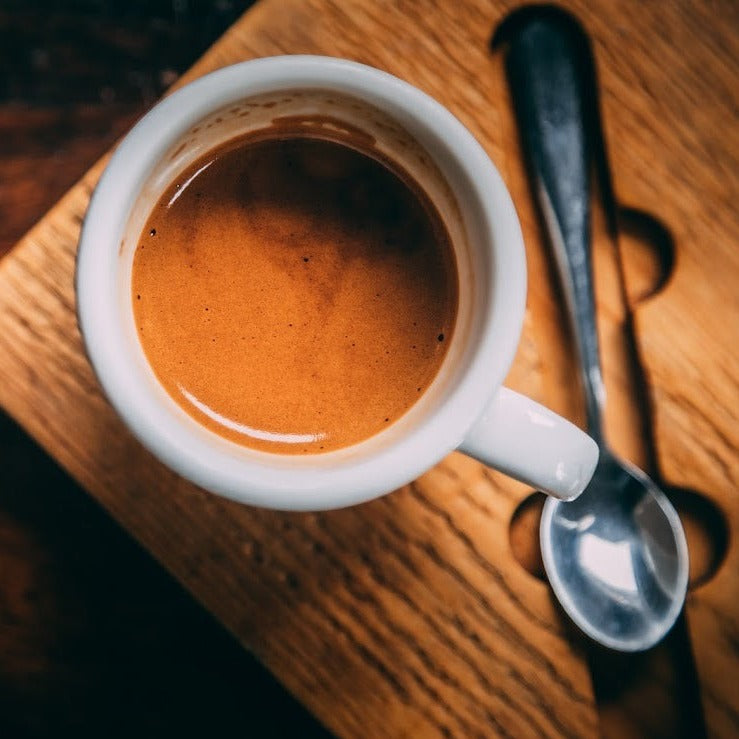What Makes SOE Single Origin Espresso Unique from Combination Beans
Coffee Beans 101: Every Little Thing You Required to Understand About Coffee and Blended Coffee Beans
When it comes to coffee, understanding the nuances of coffee and blended beans can change your daily cup. From the expanding process to toasting strategies, every step plays a duty in your coffee experience.
Recognizing Coffee Beans: Varieties and types
When diving into the world of coffee, comprehending the types and ranges of coffee beans is vital for every lover. Arabica beans are recognized for their smooth, complex flavors and reduced caffeine material, making them a favorite among coffee fanatics.
Ethiopian Yirgacheffe provides bright flower notes, while Colombian beans supply a healthy flavor account. By acquainting on your own with these beans and their tastes, you'll elevate your coffee experience and make even more informed selections in your developing journey.
The Growing Process: From Seed to Bean
When you check out the journey of coffee, all of it beginnings with seed option methods that establish the structure for high quality. From there, farming and collecting play necessary duties in guaranteeing the beans prosper. Ultimately, processing techniques change those harvested cherries right into the coffee beans you enjoy.
Seed Choice Methods
Picking the right seeds is important for generating top quality coffee beans, as it lays the structure for the whole expanding procedure. Pay interest to the seed's age and storage conditions, as fresh seeds tend to germinate better. Consider the condition resistance of various selections, as this can significantly impact your return.
Farming and Harvesting
As you nurture your coffee seeds right into flourishing plants, understanding the farming and harvesting process is essential for attaining the finest flavor and quality. Beginning by planting your seeds in well-draining dirt, ideally in a shaded area to secure them from direct sunshine.
Hand-picking is often the finest method to ensure just the ripest cherries are chosen. Timing is necessary; harvesting also very early or as well late can influence the taste profile of your beans.

Handling Techniques Explained
Once you have actually collected your coffee cherries, the following vital action is processing them to change those vivid fruits into the beans you'll brew. In the completely dry process, you spread the cherries out in the sunlight to dry, permitting the fruit to ferment and pass on unique flavors to the beans. Recognizing these techniques is essential to appreciating your coffee experience.
Toasting Methods: Just How Flavor Is Established
When it pertains to toasting coffee beans, understanding roast levels is crucial to exposing their special flavors. Each roasting method effects the aroma and improves the taste growth procedure, giving you a richer coffee experience. Let's explore just how these aspects integrated to raise your day-to-day mixture.
Roast Levels Described
Roast degrees play an essential role in shaping the taste profile of your coffee. When you choose a light roast, you'll take pleasure in brilliant level of acidity and fruity notes. As you relocate to a tool roast, you'll notice a balance of sweetness and intricacy, typically highlighting chocolate or caramel flavors. Dark roasts, on the various other hand, provide bold, great smoky attributes with much less level of acidity, making them abundant and durable. Each degree results from various roasting times and temperature levels, affecting the beans' chemical composition. By understanding these levels, you can much better pick a coffee that matches your taste choices. Experiment with various roasts to discover which one reverberates with you, boosting your total coffee experience and pleasure.
Influence On Aroma
The roast level not just affects the taste of your coffee however likewise considerably influences its fragrance. Each toasting technique launches various unpredictable substances, shaping just how your coffee scents. Additionally, the freshness of the beans plays a crucial function; freshly roasted coffee releases much more fragrant oils, improving that luring fragrance.
Flavor Growth Refine
As you discover the taste development process, you'll discover that roasting methods play a crucial role fit the taste profile of your coffee. The toasting temperature and time directly affect like this the acidity, sweet taste, and resentment of the beans. Light roasts maintain more of the bean's initial tastes, highlighting floral and fruity notes. Tool roasts balance acidity and body, offering a well-rounded taste. Dark roasts, on the other hand, draw out bold, great smoky qualities while lessening the bean's intrinsic qualities. During toasting, chain reactions, like the Maillard response and caramelization, transform the beans and boost their complexity. Trying out different roasting degrees can aid you discover your excellent brew, so do not hesitate to taste and discover the abundant range of flavors!
Coffee vs. Blended Coffee: Trick Differences
Espresso and mixed coffee each deal one-of-a-kind experiences that deal with different preferences and preferences. Espresso is a concentrated coffee brewed forcibly warm water via finely-ground coffee beans, resulting in a rich, strong flavor and a velvety layer of crema ahead. It's frequently taken pleasure in as a shot or made use of as a base for beverages like cappucinos and coffees.
On the various other hand, blended coffee combines various beans from different regions, producing a much more well balanced taste account. You'll typically locate blends that highlight body, sweet taste, or level of acidity, making them flexible for various developing techniques. While espresso concentrates on intensity, blended coffee might supply a broader variety of tastes that can alter with each sip.
Eventually, your option between espresso and combined coffee come down to your personal preference. Whether you yearn for a fast shock or a leisurely mug, both alternatives have something tasty to use.

Brewing Approaches: Unlocking the Perfect Mug
When it comes to brewing coffee, locating the right technique can transform your experience and boost your cup. Each developing method has its distinct charm and can greatly influence your coffee's taste and fragrance. Making use of a French press permits you to take pleasure in a full-bodied and abundant brew, while a pour-over approach offers a clean, brilliant cup with unique tastes.
If you favor espresso, purchasing a high quality maker can aid you understand the art of drawing shots. Conversely, for comfort, a internet single-serve shuck system uses speed without compromising preference.
Don't fail to remember about cold brew, which supplies a smooth, much less acidic coffee suitable for hot days. Experiment with various approaches to find what reverberates with your taste.
Sampling Notes: Recognizing Taste Profiles
Exactly how can you truly appreciate your coffee if you don't understand what tastes to look for? Sampling notes are your overview to recognizing the intricate globe of coffee. Some coffees may leave a chocolatey or caramel aftertaste, while others may have an intense, tidy coating.
Take into consideration the body of the coffee, also; is it airy and light or thick and syrupy? Don't forget acidity; an intense level of acidity can add sprightliness, while a low level of acidity might offer a smoother experience. By identifying these taste accounts, you'll deepen your connection with each mug, making coffee tasting a wonderful trip of discovery.

Tips for Choose and Storing Coffee Beans
Choosing and saving coffee beans appropriately can significantly improve your developing experience. Start by selecting high-quality beans that fit your preference. Seek freshness; beans roasted within the last two weeks are ideal. Inspect the roast day on the product packaging, and purchase from regional stores or reputable roasters.
As soon as you have your beans, store them in an airtight container to avoid exposure to dampness, light, and air. A dark, great place works best, so prevent keeping them in the fridge or freezer, as this can present dampness. Just grind the amount you need to maintain quality; entire beans maintain taste longer than pre-ground coffee.
Lastly, try to use your beans within 2 to 4 weeks after opening for peak taste. Following these tips will certainly assure your coffee remains pleasurable and flavorful, elevating your day-to-day brew to new elevations.
Often Asked Concerns
The Length Of Time Do Coffee Beans Keep Fresh After Roasting?
Coffee beans stay fresh for concerning 2 weeks after roasting - SOE. You ought to store them in an airtight container, far from light and dampness. Afterwards, their taste and fragrance start to lessen substantially

Can I Mix Different Coffee Bean Varieties?
Definitely, you can blend different coffee bean selections! Experimenting with blends can boost tastes and develop an unique preference profile. Simply make certain to stabilize the strengths and features of each variety for the finest results.
What Is the Perfect Grind Dimension for Espresso?
For coffee, you'll desire a fine work size, concerning the texture of table salt. This allows optimal removal, leading to a rich, flavorful shot. Experiment a little bit to discover what suits your taste best!
Exactly How Does Elevation Affect Coffee Bean Flavor?
Elevation affects coffee bean taste by affecting the growth price and chemical structure. Higher elevations bring about slower maturation, which boosts level of acidity and complexity, providing your coffee a vibrant and distinct preference you will not forget.
Are There Decaffeinated Variations of Coffee Beans?
Yes, there are decaffeinated versions of espresso beans. You can appreciate a rich espresso taste without the caffeine kick. Just seek "decaf" blends at your regional coffee store or specialty shop.
Coffee Beans 101: Everything You Required to Know Concerning Coffee and Blended Coffee Beans.
When diving into the globe of coffee, comprehending the kinds and selections of coffee beans is vital for every fanatic.When it comes to toasting coffee beans, recognizing roast degrees is key to revealing their distinct flavors. Espresso is a focused coffee made by compeling warm water through finely-ground coffee beans, resulting in an abundant, vibrant flavor and a here are the findings velvety layer of crema on top.On the various other hand, mixed coffee incorporates numerous beans from various areas, developing an extra well balanced taste profile.